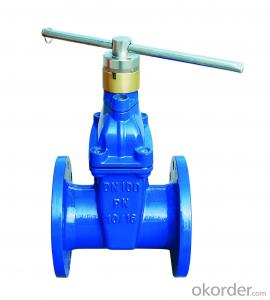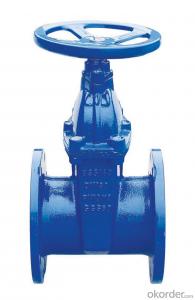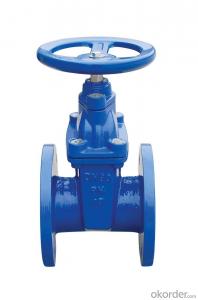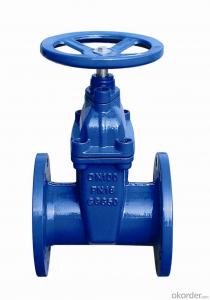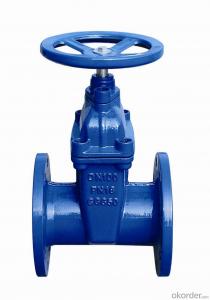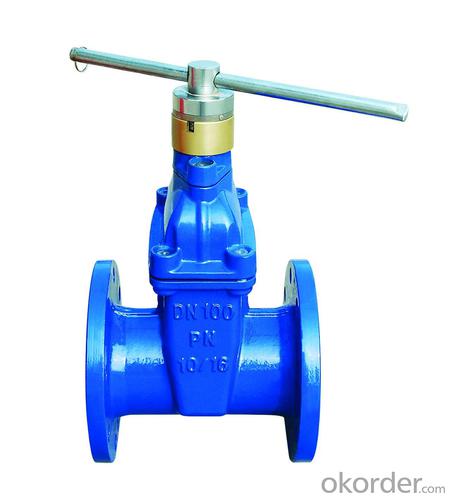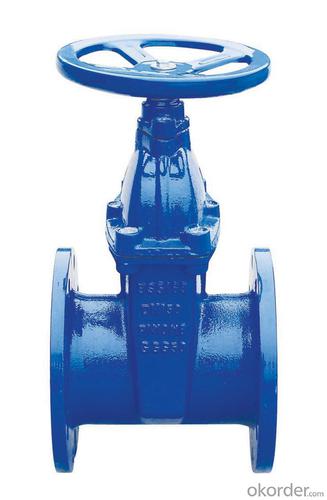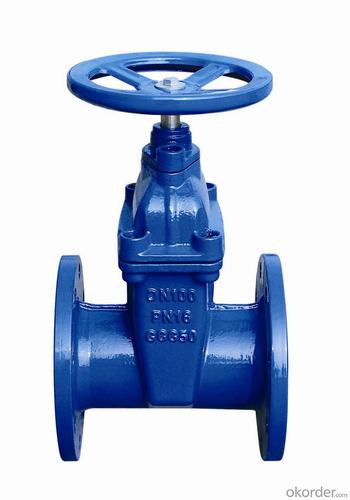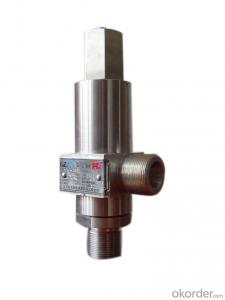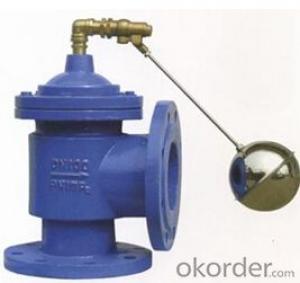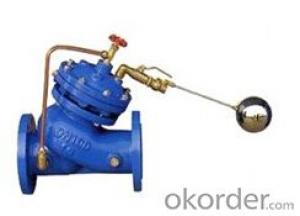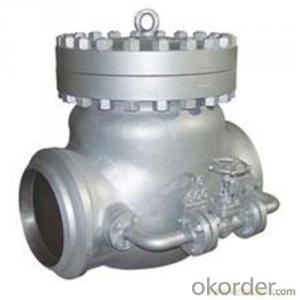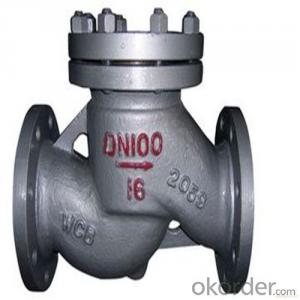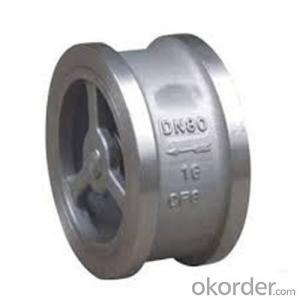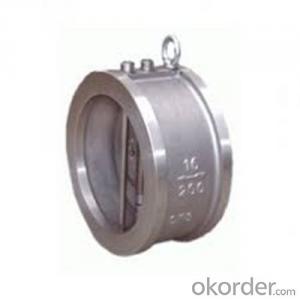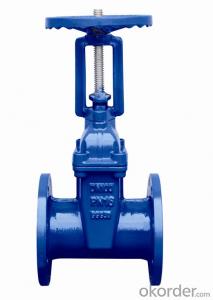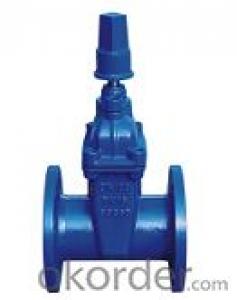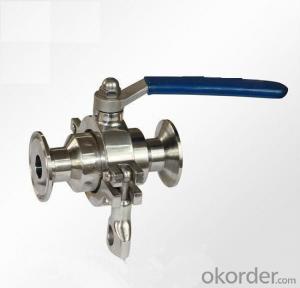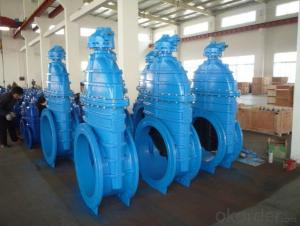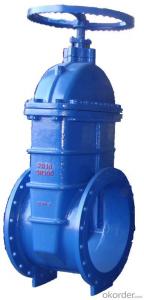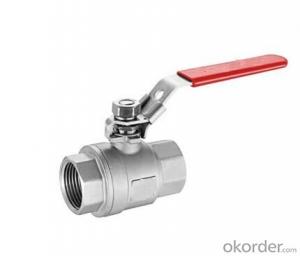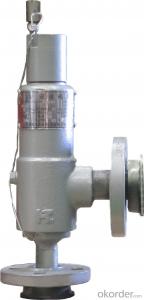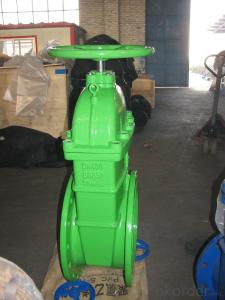DN200 Non-rising Resilient Sluice Valve BS STANDARD
- Loading Port:
- Tianjin
- Payment Terms:
- TT OR LC
- Min Order Qty:
- 1 set
- Supply Capability:
- 1000 set/month
OKorder Service Pledge
OKorder Financial Service
You Might Also Like
General valve using the market long-term, widespread Water Leakage, rust phenomenon, soft sealing gate valve produced by the introduction of foreign advanced technology of the enterprise. To overcome the poor sealing gate valve, general elastic fatigue, rust and other defects. Soft sealing gate valve is a traditional valve replacement products, the compensation effect of using flexible gate produce small deformation, achieve good sealing effect, the valve has a light switch, reliable sealing, good elastic memory and long service life and other significant advantages, can be widely used in water, sewage, construction, food, medicine, metallurgy, electric power, textile, energy systems, fluid pipeline regulation and closure devices as.
The characteristics of:
- flat style seat
The traditional control valve often pass after washing due to foreign objects such as stone, wood, cement, paper, and other debris deposited on the valve at the end of the groove. Close but not close easily lead to the formation of Water Leakage phenomenon, the lower part of the soft sealing gate valve with water using the same flat design, easy to siltation caused by debris, the fluid unimpeded.
And the overall package glue
The valve plate is made of high-quality rubber overall, the outsourcing of plastic, making the domestic first-class rubber vulcanization vulcanization after the valve plate to ensure accurate geometry, and the rubber and ductile iron gate is connected firmly, not easy to fall off and good elastic memory.
And corrosion resistance
The valve body adopts epoxy coating powder, can prevent the corrosion and rust, and can be used for sewage systems.
And not easy to break
Traditional cast iron garden gate often hit foreign objects, collision or overlap caused by the fracture phenomenon. Because the valve to switch to ductile iron, this is the case already significantly reduced.
Three "O" ring seal
As the valve stem with three "0" ring ring seal design, can reduce friction when the switch is greatly reduced, Water Leakage phenomenon and can cut off the water supply construction not replace sealing ring.
And help to drink
Due to the internal body to non-toxic epoxy resin coating, gate of the inner and outer surfaces are completely coated with rubber and can not rust or corrosion of water available to drink.
- Casting valve
Valve body casting, precise geometry makes the body without any internal finishing to ensure that the valve seal.
And light weight
The valve is made of ductile cast, lighter in weight than conventional gate weight about 20%-30%. Convenient installation and repair.
Overview:
General valve using the market long-term, widespread Water Leakage, rust phenomenon, soft sealing gate valve produced by the introduction of foreign advanced technology of the enterprise. To overcome the poor sealing gate valve, general elastic fatigue, rust and other defects. Soft sealing gate valve is a traditional valve replacement products, the compensation effect of using flexible gate produce small deformation, achieve good sealing effect, the valve has a light switch, reliable sealing, good elastic memory and long service life and other significant advantages, can be widely used in water, sewage, construction, food, medicine, metallurgy, electric power, textile, energy systems, fluid pipeline regulation and closure devices as.
The characteristics of:
- flat style seat
The traditional control valve often pass after washing due to foreign objects such as stone, wood, cement, paper, and other debris deposited on the valve at the end of the groove. Close but not close easily lead to the formation of Water Leakage phenomenon, the lower part of the soft sealing gate valve with water using the same flat design, easy to siltation caused by debris, the fluid unimpeded.
And the overall package glue
The valve plate is made of high-quality rubber overall, the outsourcing of plastic, making the domestic first-class rubber vulcanization vulcanization after the valve plate to ensure accurate geometry, and the rubber and ductile iron gate is connected firmly, not easy to fall off and good elastic memory.
And corrosion resistance
The valve body adopts epoxy coating powder, can prevent the corrosion and rust, and can be used for sewage systems.
And not easy to break
Traditional cast iron garden gate often hit foreign objects, collision or overlap caused by the fracture phenomenon. Because the valve to switch to ductile iron, this is the case already significantly reduced.
Three "O" ring seal
As the valve stem with three "0" ring ring seal design, can reduce friction when the switch is greatly reduced, Water Leakage phenomenon and can cut off the water supply construction not replace sealing ring.
And help to drink
Due to the internal body to non-toxic epoxy resin coating, gate of the inner and outer surfaces are completely coated with rubber and can not rust or corrosion of water available to drink.
- Casting valve
Valve body casting, precise geometry makes the body without any internal finishing to ensure that the valve seal.
And light weight
The valve is made of ductile cast, lighter in weight than conventional gate weight about 20%-30%. Convenient installation and repair.
- Q: I know nothing about toliets - so please bare with me. The water valve underneath my toliet is dripping and I have to turn off the water in order for it to stop. It's really annoying to have to turn the water on when I want to flush it and have to empty out the container that is catching all the time. I think it has something to do with the valve itself and I'm PRETTY sure something behind it needs to be tightened - Has this happened to anyone else? What did you do?
- If the leak is at the valve stem tighten the packing nut just below the stem, if leak is on either end of the valve tighten them with wrench also, if that doesn't work remove entire valve after shutting of water at main supply remove valve and take to hardware store to get a replacement valve, they will beable to tell you how to reinstall properly.
- Q: For a project I need to know the ingredients of a product I use and I decided to use valve oil. All it says on the sticker is petroleum distillates. Can someone give me the ingredients? I need it to have atleast 5
- Valve oils use proprietary formulas so it is unlikely you will be able to find out an exact composition. The basic ingredients of petroleum (as opposed to synthetic) valve oils are light machine oil (kerosene), mineral spirits and fragrance.
- Q: I want to switch off the water in the bathroom only due to replacing sink taps, will water still come out of the pipe if i turn the stop valve
- Assuming that the stop valves are good, turning them off will stop the flow of water to the sink taps. To test them, turn on the water faucet at the sink, then turn off both stop valves. The water should stop coming out of the faucet. If it continues to drip, the stop valves are defective and should be replaced when you do the job. If this is the case you'll have to shut off the main water valve or a valve upstream of the stops to replace them. Good Luck
- Q: I recently adjusted the valves and put new valve covers on my bug and now I have a leak around the fron corner of one of my valve covers. What happened? What can I do?
- new seals + get rid of the cheapo chrome repros and put OEM covers back on.
- Q: I'm in the process of replacing my dishwasher but I have a problem. I followed the water line from the dishwasher to under my sink and found a red valve that was completely straight, so I turned it to the right as tight as it would go and tried removing the hex nut connecting the line to the dishwasher. Maybe i'm wrong, but there is a lot of water coming out of the line and I don't think it's supposed to. I easily filled up a bowl you would use to mix cakes and it was still going! So, I turned the valve back to straight across thinking maybe someone else turned it off (my dad), and tried it again but the same thing? What am I doing wrong and what should I do to solve this?
- If it is a quarter turn valve , the lever should be across ed the valve ,not in line with it. If that's not working for ya, turn the main water valve off. then drain the water pressure by opening the faucet at the highest point and the lowest point in the house. now it's time to change the dish washer. Good luck it shouldn't be that hard.
- Q: My son was born with bicuspid aortic valve which has developed a leak. He is now on enalipril 2x per day to decrease the afterflow and buy some time before he has to have surgery, but the doctor has discussed our options and we basically have to choose when it comes down to it, whether we go with a valve repair, or valve replacement and if we do replacement we can do mechanical or donated valve or The Ross procedure. And he will probably be under 5 yrs old when this needs done, (he's 2 now) so I would like to keep him off of coumadin (blood thinner) so he can play sports in school if he would like. But I also want to do what is the best for him long term. Any advice would be helpful. thanks
- I okorder /
- Q: Can a leaking car tyre valve be repaired/ replaced, or is it more viable to get a new tyre fitted with a new valve?
- you just need the valve itself changed...its nothing to do with the tyre as the valve is bolted to the wheel not the tyre...
- Q: My doctor detectd a heart mumer. I am 48 years old. Had a echocardiogram performed. He says that I have a sightly irregular valve and I do not need to take precautions. I run three miles a day. I have heard that this condition makes your heart more suceptiable to infection. You should take antibiotics when dental work is done. My GP is a man of few words. Just says continue as usual and nothing needs to be done unless there is further symptomns. My question: Should I follow up with a heart specialist or would it be over doing it? Should I go on antibiotics when I get dental work? Can this Slightely irregular valve get worse?
- I genuinely have a coronary heart murmer which i grew to become into clinically determined with while i grew to become into born and it hasn't made any issues for me. The scientific institution can provide her an echocardiogram which will enable them to verify the quantity of the middle murmer whether it particularly is maximum possibly to be an harmless murmer which will require no therapy and because having mine clinically determined at delivery i've got no longer mandatory to have mine checked till i've got been given pregnant and had to have a repeat echocardiogram because of the fact they lost my previous outcomes!!
- Q: I want a valve sound that is clean and 'true', but I also want pre-sets. Someone said that digital pre-sets distort the valve sound.
- As long as the signal path isn't overloaded, the output can be clean in a tube circuit just like solid state. Pre-sets usually just vary the pre-amp signal before the power amp circuit. If you use a loop, you're taking the pre-amp signal, effecting it, and then giving it to the power amp. Some tube amps come with presets and effects now, like the Line 6. A tube amp purist will want nothing in the way of the tube circuits - they will just use the channels on the amp to switch between sound set-ups - like Clean Distorted, etc. It's not that a controller will distort the tone, it's just that it may color it somewhat.
- Q: I'm thinking of buying a used 2006 Volkswagen Jetta. It has a 1.5 liter 20 valve engine, and I really don't know what that means. That's good, right?And is this a good used car to buy?
- Valves are what allow the air into the cylinders and the exhaust gasses out. Cars used to only have two valves per cylinder... one to let air in and the other to let exhaust gas out, but lately cars come with more than two per cylinder. This allows the air to come in faster (with less restriction) and the exhaust gas to exit faster. Generally the number of valves isn't important, and I have no experience with Volkswagens, so I can't tell you if that's a good model to buy. Check with the Kelly Blue Book (or any similar reference book) to determine if the condition of the car and the number of miles on it are reasonable for the asking price.
Send your message to us
DN200 Non-rising Resilient Sluice Valve BS STANDARD
- Loading Port:
- Tianjin
- Payment Terms:
- TT OR LC
- Min Order Qty:
- 1 set
- Supply Capability:
- 1000 set/month
OKorder Service Pledge
OKorder Financial Service
Similar products
Hot products
Hot Searches
Related keywords
